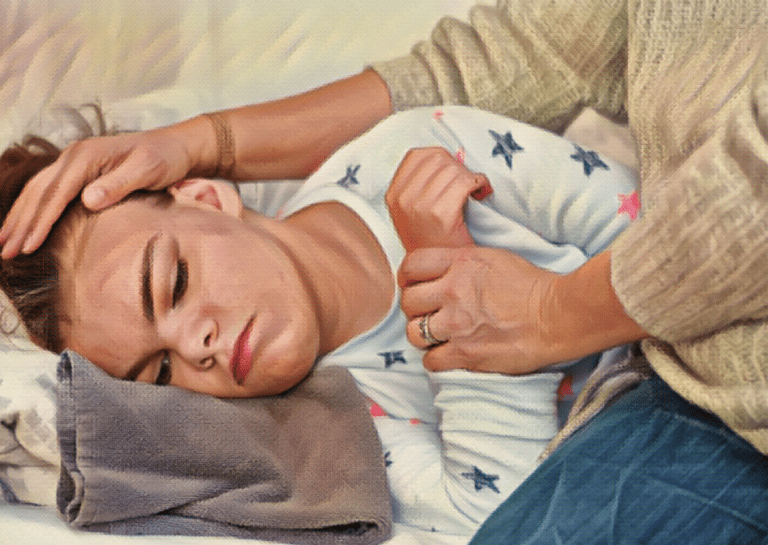Seizures result from abnormal electrical activity in the brain and are characterized by features such as spasms, turning of the eyes, arrested speech, vertigo, and impaired awareness. Epilepsy describes a state of enduring predisposition to such seizures.
Incidence rates of childhood epilepsy range from 0.5 to 8 per 1,000 person-years. Children who have suffered febrile seizures in infancy are more likely to have epilepsy later in life. Epilepsy occurs most frequently in the first year of life and affects males more than females by a small margin. The incidence of epilepsy is higher in lower socioeconomic groups
This article discusses seizures and epilepsy in children and adolescents, including the associated signs and symptoms and the types of treatment available.
Table of contents
Types of seizures and epilepsies
Certain types of epilepsy are more likely to affect certain age groups. For example, newborns are more likely to suffer seizures caused by central nervous system infections (e.g. meningitis). Older infants and younger children more frequently suffer febrile seizures (caused by fever).
There are 4 different types of seizures and epilepsies:
- Focal seizures: Focal seizures, also called partial seizures, are limited to one hemisphere in the brain and are not always associated with impaired awareness. The patient may display a variety of movements, such as chewing and swallowing movements, kicking, and arms flailing.
- Generalized seizures: Generalized seizures often manifest as impaired awareness and are bilateral in nature (affecting both sides). Patients can display signs that are similar to those of focal seizures.
- Unknown seizures: Seizures that are not readily identifiable as either focal or generalized in nature are classified as unknown seizures. Epileptic spasms are an example of unknown seizures and can include infantile spasms and spasms of the neck, torso, and extremities.
- Unclassified seizures: Some seizures cannot be classified due to inadequate information.
Causes of seizures and epilepsy
There are 6 different categories for causes of seizures and epilepsy:
- Genetic — Often beginning in childhood
- Structural — Caused by damage to the cerebral cortex, e.g. concussion, head trauma, brain hemorrhage.
- Metabolic — Seizures may be triggered by metabolic conditions such as high fever, hyponatremia, or hypocalcemia.
- Immune — Seizures can be caused by immune-mediated central nervous system inflammation.
- Infections — Infections are the leading cause of epilepsy worldwide. HIV, malaria, tuberculosis, meningitis, and sepsis are examples of infections associated with epilepsy and seizures.
- Unknown — In some cases, the causes of epilepsy and seizures are unknown.
Features of seizures
Seizures are usually stereotyped (each seizure is like the previous one), random (occurring at any time of day or night), and rarely precipitated by specific events, whether environmental, psychological, or physiological.
There are some exceptions, however. Some will experience seizures only at specific times of the day or they will have sensory-provoked seizures following stimuli such as flashing lights or being tapped on the shoulder (reflex seizures).
Specific features of seizures as experienced by the person having the seizure include:
- Seeing flashing lights in one visual field.
- Eye deviation away from the side of onset.
- Loss of awareness of surroundings.
- Automatic behavior (e.g. lip-smacking, swallowing movements).
How seizures differ depending on age
There are significant differences between seizures in young children and those in older children and adults.
Children over the age of 6 experience seizures that are more similar in nature to adult seizures than those of younger children.
Younger children have fewer complex behaviors when experiencing focal seizures with impaired awareness.
Compared to older children, their behavior is less complicated and more fragmented. The brains of infants and young children are immature compared to the adult brain and are therefore more prone to seizures.
Indicators of epilepsy
Epilepsy is indicated by the 1 or more of the following criteria:
- At least 2 unprovoked or reflex seizures that occur more than 24 hours apart. A reflex seizure is one that is caused by external stimuli (e.g. flashing lights) or internal stimuli (e.g. thoughts, emotions)
- One unprovoked (or reflex) seizure and a probability of further seizures that is similar to the general recurrence risk after two unprovoked seizures (e.g., ≥60 percent), occurring over the next 10 years.
References
- Fisher RS, van Emde Boas W, Blume W, Elger C, Genton P, Lee P, Engel J Jr. Epileptic seizures and epilepsy: definitions proposed by the International League Against Epilepsy (ILAE) and the International Bureau for Epilepsy (IBE). Epilepsia. 2005 Apr;46(4):470-2. doi: 10.1111/j.0013-9580.2005.66104.x. PMID: 15816939.
- Aaberg KM, Gunnes N, Bakken IJ, Lund Søraas C, Berntsen A, Magnus P, Lossius MI, Stoltenberg C, Chin R, Surén P. Incidence and Prevalence of Childhood Epilepsy: A Nationwide Cohort Study. Pediatrics. 2017 May;139(5):e20163908. doi: 10.1542/peds.2016-3908. Epub 2017 Apr 5. PMID: 28557750.
- Russ SA, Larson K, Halfon N. A national profile of childhood epilepsy and seizure disorder. Pediatrics. 2012 Feb;129(2):256-64. doi: 10.1542/peds.2010-1371. Epub 2012 Jan 23. PMID: 22271699.
- Scheffer IE, Berkovic S, Capovilla G, Connolly MB, French J, Guilhoto L, Hirsch E, Jain S, Mathern GW, Moshé SL, Nordli DR, Perucca E, Tomson T, Wiebe S, Zhang YH, Zuberi SM. ILAE classification of the epilepsies: Position paper of the ILAE Commission for Classification and Terminology. Epilepsia. 2017 Apr;58(4):512-521. doi: 10.1111/epi.13709. Epub 2017 Mar 8. PMID: 28276062; PMCID: PMC5386840.
- Nordli DR Jr, Bazil CW, Scheuer ML, Pedley TA. Recognition and classification of seizures in infants. Epilepsia. 1997 May;38(5):553-60. doi: 10.1111/j.1528-1157.1997.tb01140.x. PMID: 9184601
- Fisher RS, Acevedo C, Arzimanoglou A, Bogacz A, Cross JH, Elger CE, Engel J Jr, Forsgren L, French JA, Glynn M, Hesdorffer DC, Lee BI, Mathern GW, Moshé SL, Perucca E, Scheffer IE, Tomson T, Watanabe M, Wiebe S. ILAE official report: a practical clinical definition of epilepsy. Epilepsia. 2014 Apr;55(4):475-82. doi: 10.1111/epi.12550. Epub 2014 Apr 14. PMID: 24730690.
